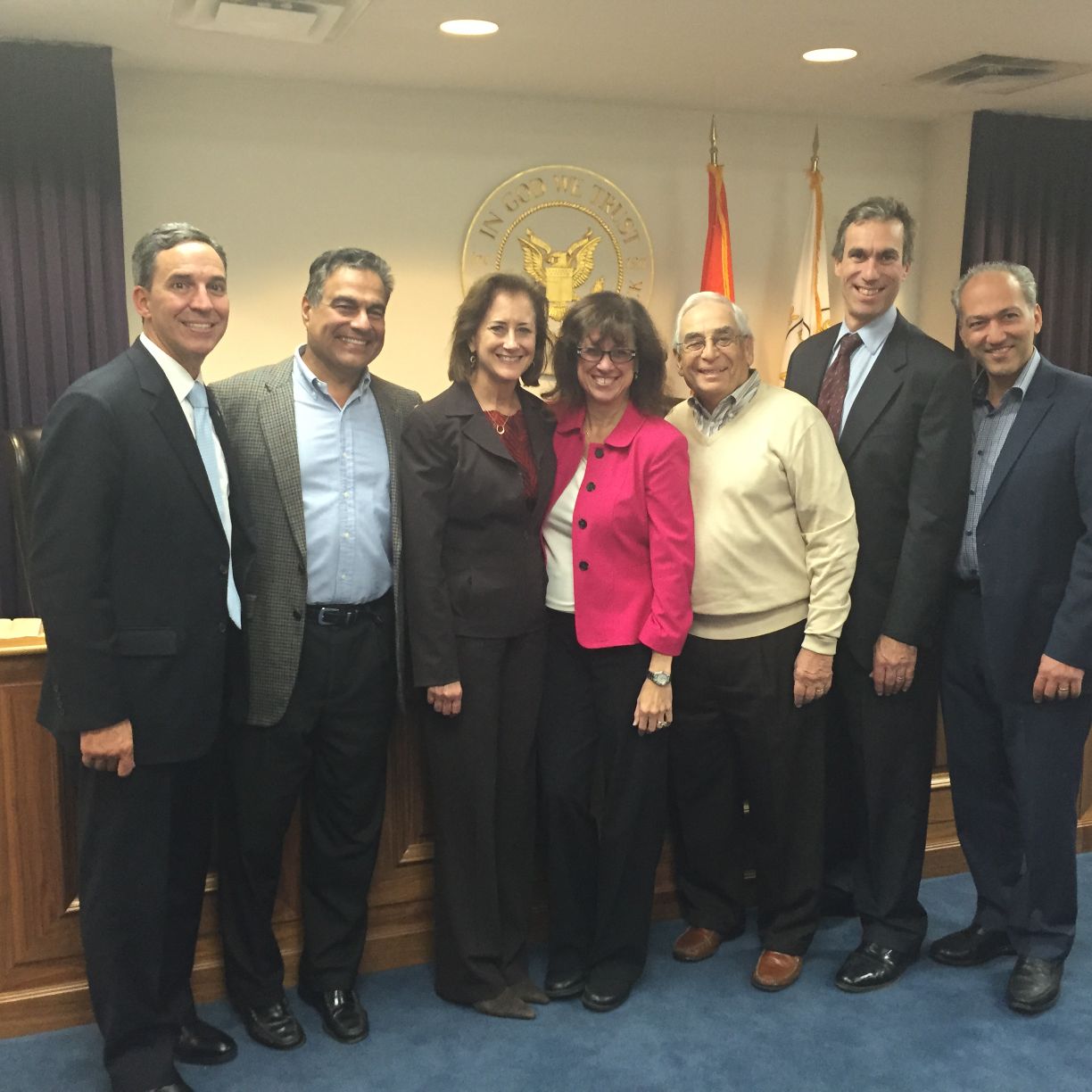State Sen. Jack Martins (R-Mineola) said last Thursday people who oppose a minimum wage of $15 will always be looked at like they “hate poor people,” but the discussion needs to go further than just the economic status of workers.
“When the price of gallon of milk goes from $4 to $8 because you have to pay $15 to the store clerk who stands behind the counter, someone’s gotta pay that,” Martins said. “These are the discussions we’ve got to have.”
Speaking at a Great Neck Village Officials Association meeting, Martins said not enough thought has been put into the impact of a $15 minimum wage on businesses.
“What if you knew it was going to force people out of business? What if you knew that not-for-profits in the community, who don’t have the ability of increasing their prices, who provide services for the disabled or provide services for senior citizens are going to close shop and no longer be able to provide those services? How do you feel then?”
Martins will lead a series of state Senate hearings in Albany about Gov. Andrew Cuomo’s plan to raise the state minimum wage to $15 per hour.
In the hearings, which will probably run from mid-November to the first week of December, the Senate’s labor committee will assess the potential impacts of the wage hike, Martins said.
While the witness list has not been finalized, Martins said, the committee will most likely hear from businesses, economists, labor leaders and representatives from non-profit organizations.
As chair of the committee, he will moderate the discussions and question the witnesses.
Martins said that a recent study conducted by the state showed that 70 percent of people were in favor of raising the minimum wage to $15 an hour.
The Service Employees International Union spent $30 million to promote a $15 minimum wage, Martins said, but there were no analytics involved in determining that number.
In May, Gov. Andrew Cuomo, who Martins said is strongly backed by the SEIU, established a three-person wage board to hold public hearings and determine what the minimum wage for fast food workers should be.
Martins said at the hearings “one person after another” came to the stand and said they could not afford to live on their current wages and needed to make more money.
“The wage board concluded that people who work in fast food restaurants should make $15 an hour,” he said.
The problem, Martins said, is that the minimum wage is being discussed as a living wage but they are two different things.
He added that the minimum wage issue was a societal discussion that “needs to be had,” and that his main concern was with local small businesses that would be forced to close because they could not pay their workers $15 an hour.
Martins, who served as mayor of the Village of Mineola for eight years, also discussed next fiscal year’s expected .6% tax cap and what the state Senate could do to help villages more.
The state distributes $700 million in aid and Incentives for municipalities funding to cities not including New York City, villages, and towns, Martins said, but only $20 million of that funding goes to villages.
“If you have a small city Upstate with 5,000 residents, they may get a couple million dollars in state funding and aide,” he said. “If you have a village on Long Island with 5,000 residents, you know how much they’re getting? Probably about $10,000. That’s the difference. It’s that dramatic.”
Martins added that villages and village officials need to “go get it” and ask for more money from the state.
“If you have 10,000 residents in Great Neck, then you should get the same amount as 10,000 residents whether you’re a city, whether you’re a village, or whether you’re a town. It makes sense,” he said.
State Comptroller Thomas DiNapoli announced last week that during the first six months of the fiscal year, which goes from April 1 to Marcg 31, the state was running a $4 billion surplus in receivables.
Martins said although he is not sure that trend would continue for the last six months of the fiscal year, there are two options the state has to do with that money.
He said that money should be redistributed to local governments to prevent the need for property tax increases.
“I think that is valid and something we should be looking at,” Martins said. “What we get at state level should go down to the local level. There is no area of the state or municipal level of government that is as close to the people as our villages.”
He added that the next option, as unrealistic as it may sound, would be to cut income taxes and allow people to keep their own money.
Martins said the same way schools get increased funding every year, local governments needed to experience the same increasing.
“Each and every year there is an increase in a percentage that goes to schools because of the tax cap, but there is no equal effort when it comes to local government,” he said.



